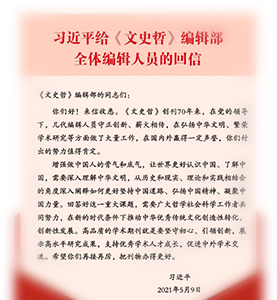汉语诗歌“拗救”说辨伪
龚祖培
摘要:清人阐述的汉语诗歌“拗救”理论,是没有依据的伪科学。今天的全部相关著述,包括学术性很强的权威性著述,仍然沿用清人旧说,甚至犯常识性的低级错误。唐代有完整的诗歌声律理论及规则,却没有“拗救”条文。宋人说“拗”,是说语言风格、用字艺术等,有“拗”的概念而无“救”的内容。所谓“救孤平”、“特定的平仄格式”等句型,是因“仿古修辞”得来;沈约所举曹植、王粲等人诗句的论说,对此产生了重大影响,最终使古体句式融入律体之中。赵执信出于特殊的治学原因,最终确立了完备的“拗救”知识体系。《声调谱》中新说很多,但“大拗双救”是典型的欺人之说。综合分析,现在可以得出结论:“拗救”这一知识体系,因新说之多而建立,也因伪说之多而瓦解。
A Discrimination of the Theory of “Metrically Irregular and Resolving” in Chinese Poetry
Gong Zupei
The theory of “metrically irregular and resolving” (ao jiu) in Chinese poetry expounded by people of the Qing Dynasty belongs to pseudoscience without evidence. All the relevant writings nowadays, including some books of authority still followed the former opinion of the Qing Dynasty, and even made basic errors. There were complete theories and rules on poetic rhythm in the Tang Dynasty, but no provisions on “metrically irregular and resolving”. The “metrically irregular” discussed by people of the Song Dynasty referred to language style, diction art, and etc, which had the idea of “metrically irregular” but no content of “resolving”. The so-called sentence patterns of “resolving the unaccompanied level tone”, “specific style of level and oblique tones” and so on all came from “antique rhetoric”; and Shen Yue’s exposition pointing to the examples of lines by Cao Zhi, Wang Can, and other poets had a major impact on the theory, then finally made the sentence patterns of old style integrate into regulated verse. Zhao Zhixin finally built a complete knowledge system of “metrically irregular and resolving” for special reason. There were many new theories in A Manual of Tones (Shengdiao Pu), but “great metrically irregular with double resolving” is a typical deceiving theory. By comprehensive analysis, it can be concluded that this system was built on many new theories, and collapsed because of many pseudo theories.


